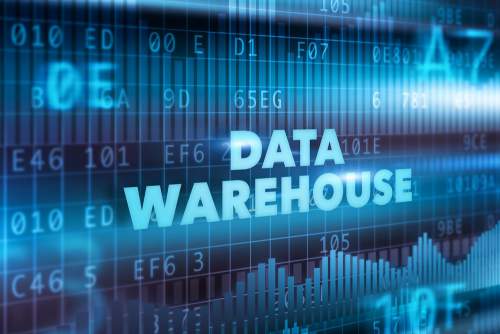How to use Data Warehouse Software to your Benefit

Data warehouse software has been a key feature of enterprise IT infrastructure for many years. More affordable, user-friendly products have since appeared to benefit smaller companies, but there is still some confusion over exactly what data warehouses are and how they can be used to benefit your organization.
Companies in nearly every industry are using data software to deliver useful insights and projections to guide business decisions. Data warehouses present people across the enterprise with transparency into their past performance. While big data and analytic products can take many forms, all are essentially based on data warehouses. For those companies getting on board with business intelligence (BI), a data warehouse software comparison is important to ensure you’re getting the best ROI on your technology costs.
What are data warehouse platforms?
Data warehouses are best defined according to the kinds of data stored there and how it’s used. They may be designed to support BI activities like data mining and predictive analysis, as reporting solutions, or for OLTP (online transaction processing). Often a data warehouse feeds a number of decision support mechanisms depending on the applications it will be paired with.

Data warehouses are normally read-only information sources. Data is structured to meet real-world business requirements rather than strictly programmed procedures. Data warehouse software categorizes data in terms of business segments such as accounting, sales, or marketing, and according to dimensions that give meaning to the raw data, like time, location, or product.
What kind of data goes into a data warehouse?
Data captured from operational activities is transformed to fit the data structure of various tables and loaded digitally into the warehouse. Typically this data comes from point-of-sale systems, online activities, sensors, XML or CSV data files, operational databases, and in some cases even manually created logs. However, all this information has to be scrubbed and validated by ETL (extract, transform, and load) processes before it can be introduced to the data warehouse. This helps to prevent bad or missing data from going into the system.
Ensuring that all data is consolidated and reliable allows staff to run reports or develop analyses without concerns about preparing raw data or validating its accuracy.
Operational systems where the data is initially captured are part of daily systems and constant business activity. While fresh data is usually loaded at regular intervals, the information in a data warehouse is typically historical in nature, covering a timeframe of years. This allows analysts to look for patterns and trends over time.
How data warehouses are used?
A data warehouse software serves as an online analytical processing (OLAP) system. This enables end users to find answers to business issues through selection and iteration of data relevant to the questions being asked or the problems that require solutions. Decision makers can monitor processes, improve efficiencies, test theories, track costs, project sales and marketing results, and gain insights into virtually any aspect of operations where quantifiable data is captured.
For instance, a combination of CRM and data warehouse software can help to both track and optimize your customer relations. This will both maximize the customer experience and reduce mistakes.
There are numerous advantages to effectively deploying and utilizing a data warehouse. It begins with a data warehouse software comparison to find the platform that will best integrate with your existing systems while providing for your current and future data needs. IT direction is typically required to set up data warehouses so that there’s both a separation and smooth flow between transaction-based operational systems and streamlined organization of the historical data warehouse information. This way, a data warehouse can provide analytics without impeding, or being impeded by, edits and additions necessary to data collection.

Types of data warehouse software?
There are different categories of technical tools that can integrate with existing data warehouses to provide greater function and value. There are options such as a database management system (DBMS), web-based OLAP, reporting tools, dashboards, pre-packaged analytical methods, and more. But a data warehouse software comparison should gravitate to tools that provide some level of customization and scalability to adapt to operational and market changes.

Before you choose a data warehouse platform, you should first identify your company’s data needs. Consider some past use cases and what form of data system would have provided greater speed or benefits. Whether you’re concerned with simple reporting or advanced data mining, you’re covered if your data warehouse software comparison locates tools that are upgrade able and scalable.

Kalyan Banga226 Posts
I am Kalyan Banga, a Post Graduate in Business Analytics from Indian Institute of Management (IIM) Calcutta, a premier management institute, ranked best B-School in Asia in FT Masters management global rankings. I have spent 14 years in field of Research & Analytics.












0 Comments